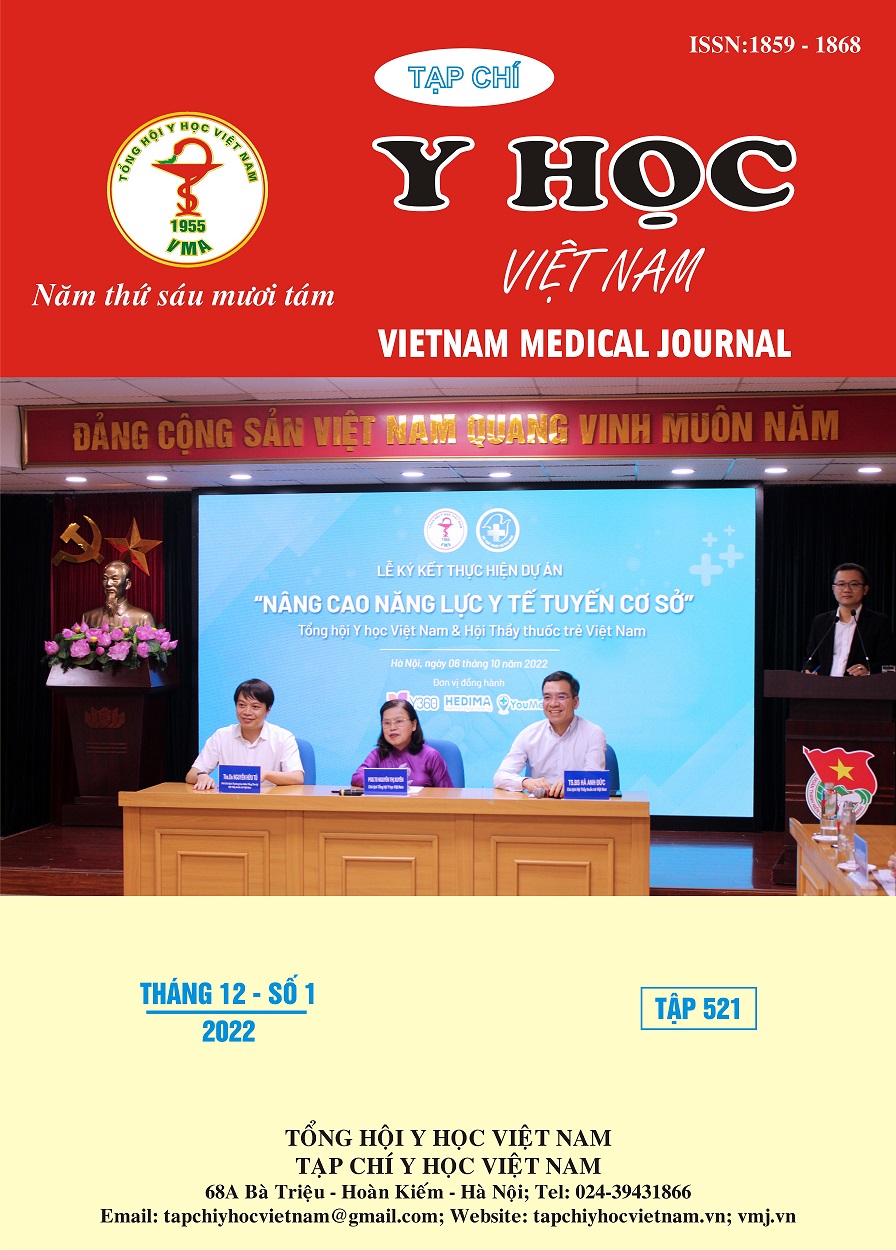CLINICAL CHARACTERISTICS AND BACTERIOLOGY IN EXACERBATION OF BRONCHIECTASIS PATIENTS AT THE RESPIRATORY CENTER IN BACH MAI HOSPITAL
Main Article Content
Abstract
Objectives: To describe clinical characteristics, bacteriological characteristics in patients with exacerbation of bronchiectasis at the Respiratory Center in Bach Mai Hospital. Subjects and research methods: This is a cross-sectional, prospective study. The study subjects included 66 patients with a confirmed diagnosis of exacerbation of bronchiectasis at the Respiratory Center in Bach Mai Hospital from August 2021 to August 2022, all patients were tested for sputum microbiology and bronchoalveolar lavage. Results and conclusions: We conducted a study on 66 patients with exacerbations of bronchiectasis. The mean age of the subject was 59.2 ± 11.7. The female/male ratio is 1.64/1. The most common function symptoms were cough sputum and chest pain with a rate of 66.7% and 62.1%, followed by fever 48.3%, hemoptysis 33.3%, dyspnea 15.2%. Physical symptoms mainly when examining the lungs were moist rales, crackles with 77.3%. Regarding bacteriological characteristics, the rate of positive bacterial culture in sputum was 27.3%; the most common bacteria was Pseudomonas aeruginosa with a rate of 15.2%, followed by Acinetobacter baumannii (4.5%). The rate of positive bacterial culture in bronchial fluid was 31.8%; Pseudomonas aeruginosa (12.1%) was the most common bacteria, followed by Klebsiella pneumoniae (4.5%) Staphylococcus aureus (14.3%). The bronchial fluid culture was positive in 1 cases (1.5%) for Mycobacterium tuberculosis and Mycobacterium avium. Pseudomonas aeruginosa bacteria are still sensitive to most antibiotics such as Meropenem, Piperacillin/Tazobactam, Ceftazidime, Amikacin, and Ciprofloxacin with a rate of 94.4%, 90.9%, 81.8%, 88.9%, and 57.1%, respectively. Pseudomonas aeruginosa is increase in hospital admissions and exacerbations in adult bronchiectasis.
Article Details
Keywords
Bronchiectasis, exacerbation of bronchiectasis, bronchoscopy
References
2. Pasteur MC, Bilton D, Hill AT. British Thoracic Society guideline for non-CFbronchiectasis. Thorax. 2010;65(Suppl 1):i1-i58. doi:10.1136/ thx.2010.136119
3. Araújo D, Shteinberg M, Aliberti S, et al. The independent contribution of Pseudomonas aeruginosa infection to long-term clinical outcomes in bronchiectasis. Eur Respir J. 2018;51(2):1701953. doi:10.1183/13993003.01953-2017
4. Dimakou K, Triantafillidou C, Toumbis M, Tsikritsaki K, Malagari K, Bakakos P. Non CF-bronchiectasis: Aetiologic approach, clinical, radiological, microbiological and functional profile in 277 patients. Respiratory Medicine. 2016;116:1-7. doi:10.1016/j.rmed.2016.05.001
5. King PT, Holdsworth SR, Freezer NJ, Villanueva E, Holmes PW. Characterisation of the onset and presenting clinical features of adult bronchiectasis. Respir Med. 2006;100(12):2183-2189. doi:10.1016/j.rmed.2006.03.012
6. Ngô Qúy Châu. Nghiên Cứu Đặc Điểm Lâm Sàng và Điều Trị Giãn Phế Quản Tại Khoa Hô Hấp Bệnh Viện Bạch Mai 1999-2003. Tạp Chí Y Học Lâm Sàng. 2003:24-31.
7. Angrill J. Bacterial colonisation in patients with bronchiectasis: microbiological pattern and risk factors. Thorax. 2002;57(1):15-19. doi:10.1136/thorax.57.1.15
8. Miao XY, Ji XB, Lu HW, Yang JW, Xu JF. Distribution of Major Pathogens from Sputum and Bronchoalveolar Lavage Fluid in Patients with Noncystic Fibrosis Bronchiectasis: A Systematic Review. Chin Med J (Engl). 2015;128(20):2792-2797. doi:10.4103/0366-6999.167360


